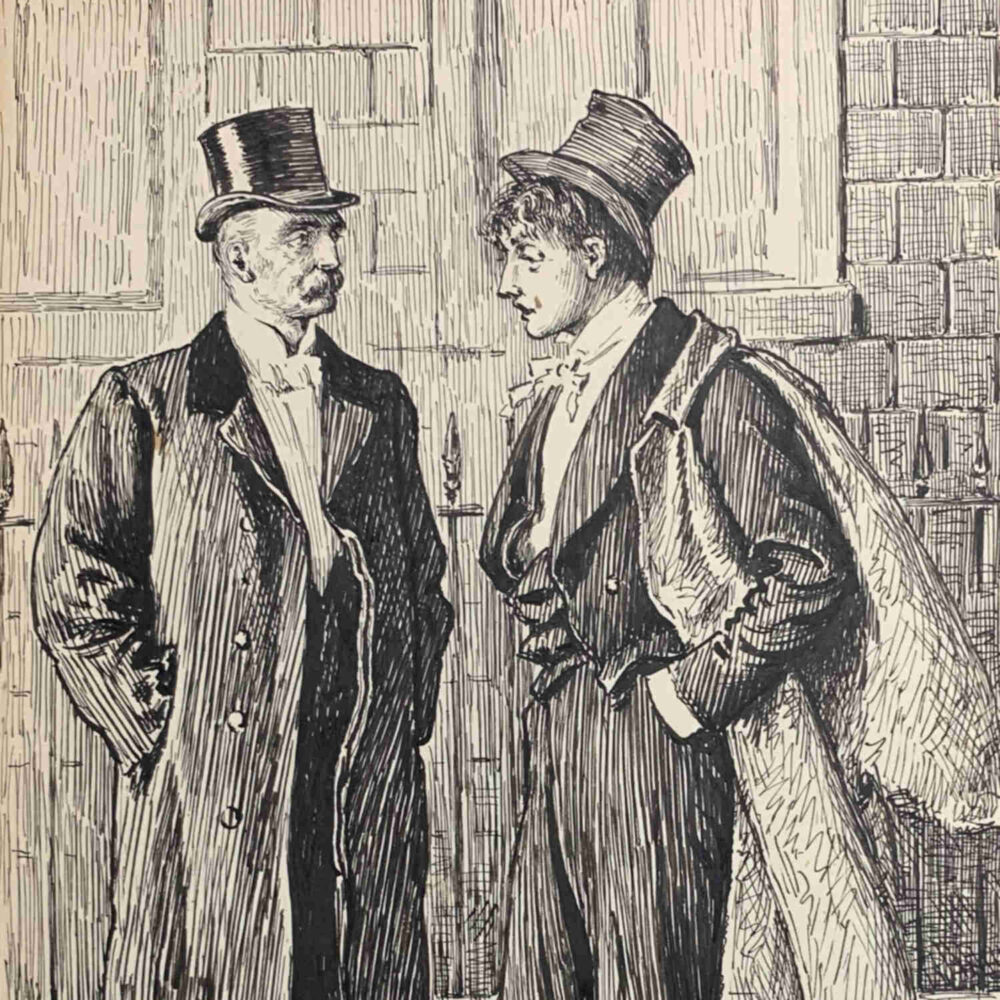George du Maurier was a satirist.
He spent his childhood in an atmosphere of precarious gentility. His father came from a French family of master glassblowers but, obsessed with social status, gave himself the aristocratic name of Du Maurier.
Du Maurier’s father wanted Du Maurier to have a profession, but Du Maurier failed his baccalaureate and wasted a year at University College London. Only after his father’s death did Du Maurier return to Paris to study art.
When Du Maurier later moved to London, he became immersed in an enlightened social circle while beginning to contribute as an artist and writer for some leading periodicals, including the famous commentary magazine, Punch, dissecting the pretensions and foibles of society. He developed a cartoon format for Punch that balanced text and image both to report and to satirize the fashions and foibles of society. He developed a very literary type of cartoon, which married often-extensive texts to subtle drawing and displayed an understanding of wider cultural issues. His early years gave him both fuel and insight for his later social commentaries. His best work satirized the upper middle class attempting to follow the fashions of the Aesthetic Movement.
When Du Maurier’s eyesight worsened, he reinvented himself as a novelist—enjoying as much success as he had as an artist—writing Peter lbbetson (1891), The Martian (1896) and Trilby (1894).
